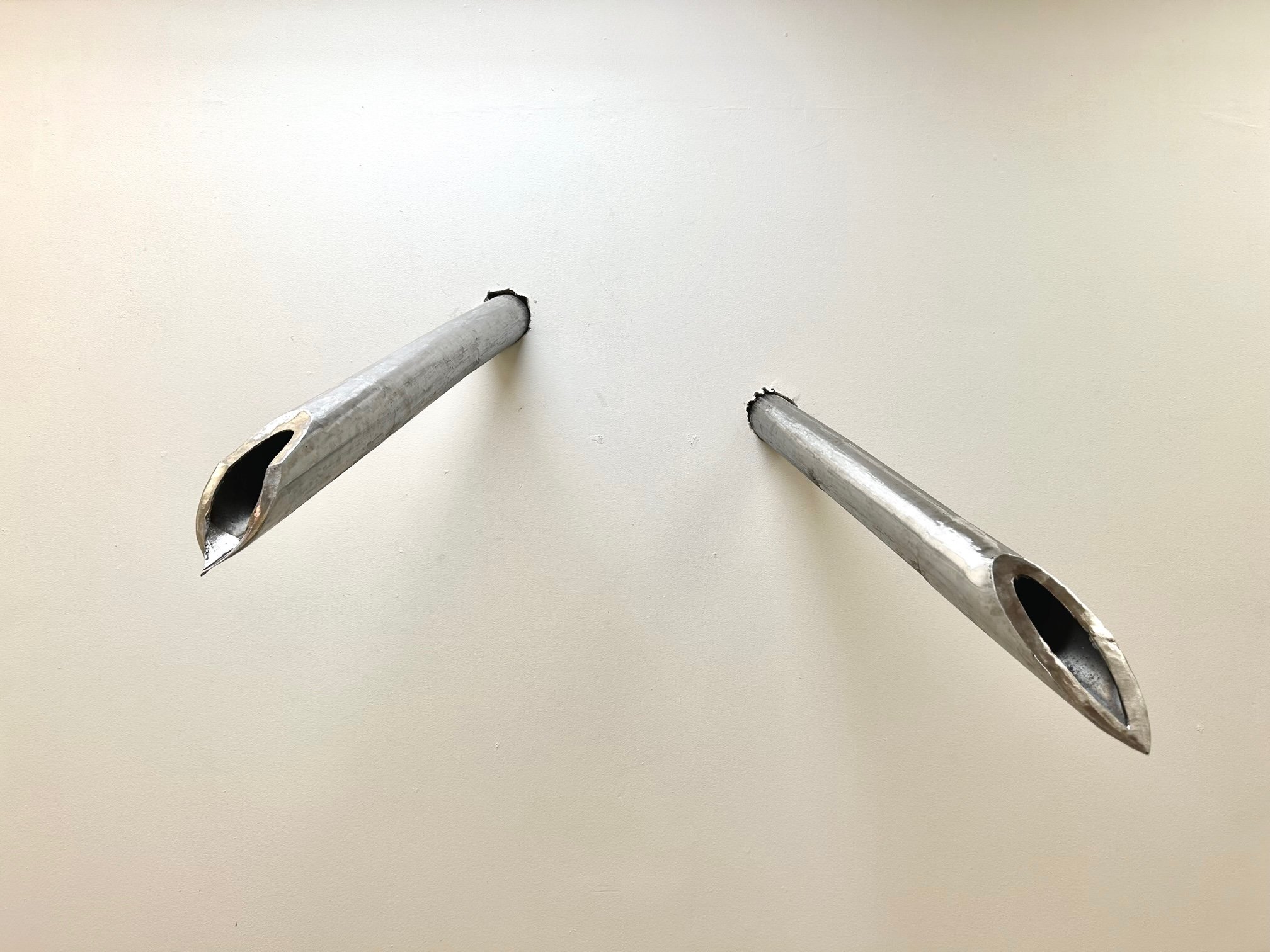This is a creative project about eugenics created by artist Flora Ranis '24.
Flora Ranis (she/her/hers) is a student majoring in Ethnicity, Race, and Migration with a certificate in Spanish from Florida. She is a member of the Class of 2024 and an artist. She created this artwork as her final project in the ER&M seminar, Eugenics and Its Afterlives, in the Fall of 2023.

Hand-Signed/Hand-Pierced (2023). 2.5 in x 49 in. Steel, ink, etomidate.
It is not simply the metal tip of the needle but also the metal tip of the pen that engenders systemic violence within the United States. In the early 1900s, for example, more than 60,000 women were sterilized without their consent (Kaelber, 2012). Such sterilizations often required the use of stainless steel needles in the form of intravenous lines containing anesthetics as well as the passing of eugenic legislation and the formation of eugenic IQ tests.
In 1934, Mary De La Paz Franco, who had been molested at thirteen and deemed promiscuous by her family and community, was committed to a state hospital in southern California (Cordova Diaz, 2023). After only two months, Mary’s intelligence was examined through use of an IQ test. She scored a 53 and was subsequently deemed both a “sex delinquent” and a “low moron.” Such language was physically written into her records and propelled medical professionals to recommend Mary for sterilization. Such language cannot be distanced from the physical assault Mary would suffer from at and beyond Pacific Colony State Hospital.
The fountain pen nib and the needle are similar in their steel compositions and miniscule scale, and the microscopic nature of such objects has rendered them inhuman and, as such, unchanging. However, just as students have worked to uncover the history of eugenics at Yale and beyond and analyze how the movement came to be regarded as a legitimate science, we must physically uncover such tools to expand their legibility. What happens when we make legible the fingerprints of the needle and pen, when we investigate their imperfect, human construction? What happens when we closely examine a history we once could not see?
Sources:
Cordova Diaz, Stacy. (2023). Wild Young Girl: A Memoir of a Family’s Journey Through Eugenics and Its Afterlives.
Kaelber, Lutz. (2012). “Eugenics: Compulsory Sterilization in 50 American States.” Social Science History Association